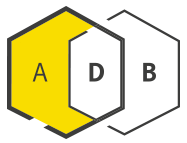Compound ID | 937
Difloxacin
Synonym(s): A 56619
Class: Fluoroquinolone
| Spectrum of activity: | Gram-positive & Gram-negative |
| Institute where first reported: | Abbott Laboratories; AbbieVie |
| Highest developmental phase: | Phase 2 |
| Development status: | Inactive |
| Reason Dropped: | A number of frequent side effects: appetite disorders; CNS disorders; dizziness; drowsiness; headache; insomnia; nausea; vision disorders; vomiting |
| Chemical structure(s): | |||||||||||
|
|
| External links: | |
| PubChem link: | https://pubchem.ncbi.nlm.nih.gov/compound/56206 |
| Guide to Pharmacology: | difloxacin |
| Citation: | https://journals.asm.org/doi/10.1128/aac.28.4.514 |


